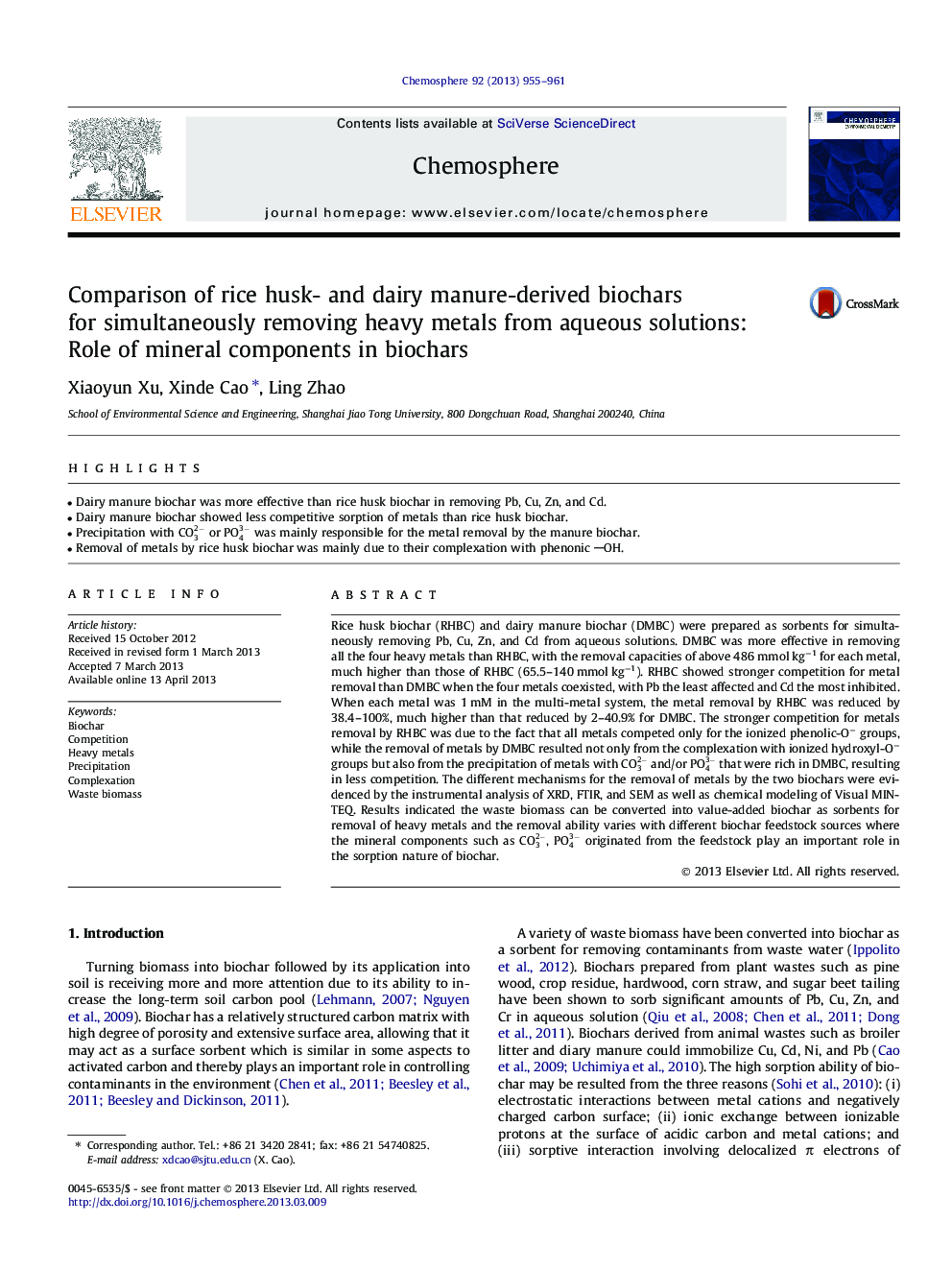| Article ID | Journal | Published Year | Pages | File Type |
|---|---|---|---|---|
| 6310007 | Chemosphere | 2013 | 7 Pages |
Abstract
Rice husk biochar (RHBC) and dairy manure biochar (DMBC) were prepared as sorbents for simultaneously removing Pb, Cu, Zn, and Cd from aqueous solutions. DMBC was more effective in removing all the four heavy metals than RHBC, with the removal capacities of above 486 mmol kgâ1 for each metal, much higher than those of RHBC (65.5-140 mmol kgâ1). RHBC showed stronger competition for metal removal than DMBC when the four metals coexisted, with Pb the least affected and Cd the most inhibited. When each metal was 1 mM in the multi-metal system, the metal removal by RHBC was reduced by 38.4-100%, much higher than that reduced by 2-40.9% for DMBC. The stronger competition for metals removal by RHBC was due to the fact that all metals competed only for the ionized phenolic-Oâ groups, while the removal of metals by DMBC resulted not only from the complexation with ionized hydroxyl-Oâ groups but also from the precipitation of metals with CO32- and/or PO43- that were rich in DMBC, resulting in less competition. The different mechanisms for the removal of metals by the two biochars were evidenced by the instrumental analysis of XRD, FTIR, and SEM as well as chemical modeling of Visual MINTEQ. Results indicated the waste biomass can be converted into value-added biochar as sorbents for removal of heavy metals and the removal ability varies with different biochar feedstock sources where the mineral components such as CO32-, PO43- originated from the feedstock play an important role in the sorption nature of biochar.
Related Topics
Life Sciences
Environmental Science
Environmental Chemistry
Authors
Xiaoyun Xu, Xinde Cao, Ling Zhao,
